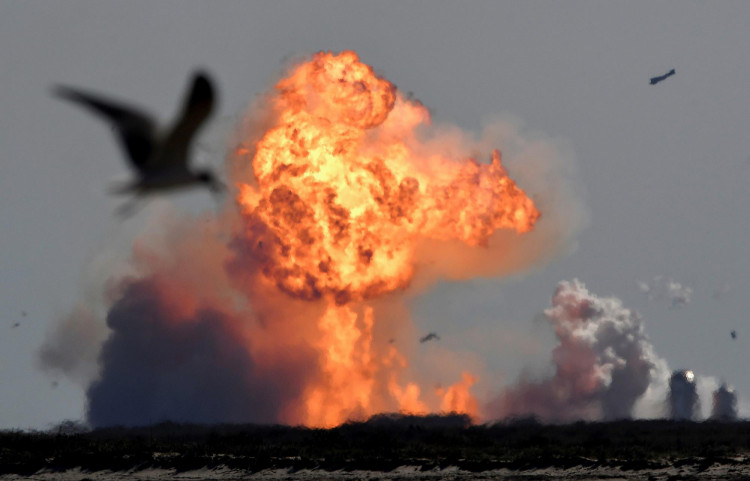A SpaceX rocket prototype that the Elon Musk-led company hopes will one day transport humans to Mars ended in a fiery explosion Tuesday as the space vehicle tried to land following a test flight, Space.com, Bloomberg and CNN reported on Wednesday.
The 165-foot-tall stainless steel-bodied SN9 lifted off at 3:25 p.m. EST and appeared to fly well, reaching its target altitude of about 6.2 miles and performing a difficult horizontal "belly flop" maneuver as the space vehicle would in an operational re-entry to Earth's atmosphere.
It was during this time that the rocket attempted to return to a vertical position for landing that the problems began, with videos showing it re-entered too fast and at a dangerous angle.
The rocket landed in a spectacular crash and exploded into bright orange-white flames, but the fire did not spread. Tuesday's unmanned test lasted only six and a half minutes.
SN10, the next Starship prototype on a launch stand nearby, did not suffer any damage from the flying debris. It will probably be launched in a similar mission in a few weeks to find out if the company can do the landing correctly this time.
SpaceX has not announced when the SN10 would be ready for a test flight. An earlier rocket, SN-8, suffered the same explosive landing in Dec. 9, igniting a similar spectacle.
"We've just got to work on that landing a little bit," SpaceX launch commentator John Insprucker said in remarks quoted by The Guardian. "Reminder: this is a test flight," he said.
The Federal Aviation Administration, the agency that licenses such test flights, will "oversee the investigation of today's landing mishap involving the SpaceX Starship SN9 prototype in Boca Chica, Texas," an agency spokesperson said in a statement, as per CNN.
The test flight was carried out after some setbacks last week when the FAA reportedly did not give SpaceX clearance pending further evaluation. The FAA refusal prompted complaints from Musk, but the issue was settled in time for Tuesday's launch.






